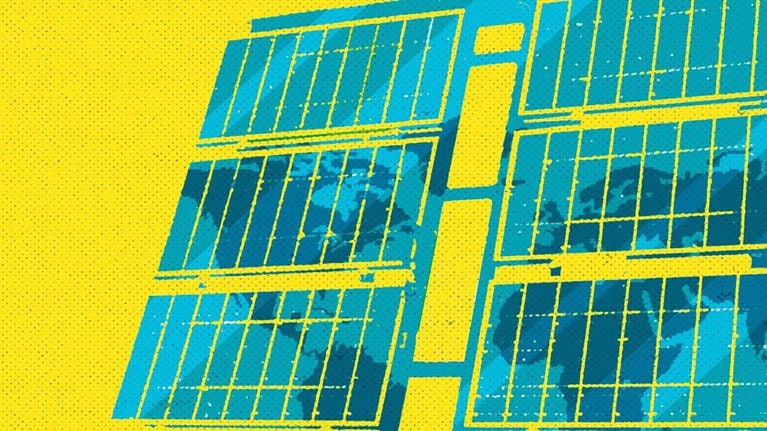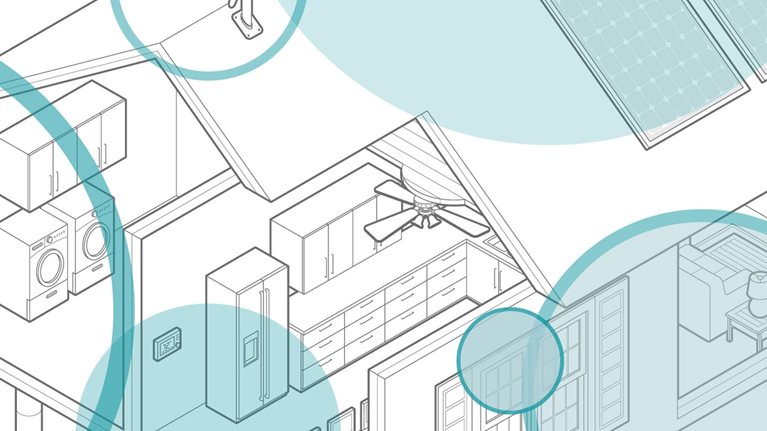Many US consumers simply aren’t very energy efficient. While they are increasingly aware of the benefits of using less energy and the proliferation of products to help them do so, it’s hard to get them to make even modest behavioral changes. And campaigns that utilities have undertaken to promote energy efficiency as part of their energy-saving mandates are becoming less and less effective.1 So what’s the disconnect?
In short, we believe utilities need to follow the lead of their consumer-facing peers to improve their understanding of how consumers behave and adopt better ways of engaging them. Only then will utilities make inroads into convincing consumers to play their part in capturing the sizable energy savings that could be available.
The energy-efficiency challenge
Awareness of and interest in energy efficiency is already substantial, even though the United States lags behind most other wealthy countries when it comes to energy efficiency.2 Ratepayer-funded energy-efficiency programs in the United States expanded from $2.6 billion in 2006 to nearly $7 billion in 2011, and the number of states with energy-resource standards rose from 8 in 2006 to 24 in 2012. Our research3 shows that around 80 percent of consumers are aware of energy efficiency and its benefits, and of a broad array of energy-efficient appliances or home-modification options. And energy efficiency is the most important stated characteristic after price when buying an appliance or considering a home-improvement project.
At the same time, utilities have ramped up their energy-efficiency programs, while appliance vendors and providers of demand-management systems are marketing new, more sophisticated offerings. We estimate that a range of initiatives that includes upgrading lighting, appliances, and electrical devices, as well as installing better insulation and other measures in existing and new houses, could reduce US residential-energy demand by 20 percent or more.4
The stakes are significant: more than $1 trillion in value through 2020. Yet despite growing consumer awareness and increased spending by utilities to encourage energy efficiency, most residential-consumption habits remain largely the same.
In fact, our latest research5 paints more clearly than ever a picture of untapped promise: even modest behavioral changes that would have little to no impact on the lifestyle of US residential consumers could lead to significant savings—as much as an additional 20 percent of residential-power demand (exhibit). Yet not much is happening. Users typically perceive purchased appliances and devices to be more energy efficient than they actually are. They underuse rebates and incentives that would make purchasing more-efficient appliances more affordable. And even when they buy these appliances, they are failing to set the controls in ways that let them capture the full energy-saving potential.
Modest changes in energy-use behavior on the part of US residential customers could yield significant energy-efficiency savings.

Converting awareness to action
There is clearly a need to better understand and communicate with consumers. Some utilities and appliance vendors use demographic segmentation (for example, by age or zip code) to build an understanding of the customer base. But the information this generates remains fairly general and does not provide utilities with a clear basis on which to engage with consumers on energy-efficiency issues. By looking at residential-power users in the same way that other consumer-facing industries have long addressed their markets, industry players can build a more effective approach to fostering behavioral energy efficiency.
Our research identified five consumer segments that show significantly different levels of concern about energy-saving behavior:
- About 20 percent of the population is made up of green advocates, who care about energy-saving behavior as a goal in its own right. This is the only segment that is motivated by perceived environmental benefits from more-efficient use of energy. The segment’s profile also includes an interest in using new technologies.
- At the other extreme are disengaged energy wasters, a group (also about 20 percent of the population) that doesn’t care about saving energy or saving money. They are neither interested in new technologies nor the environment.
- The rest of the population is primarily motivated by saving money but still comprises three distinct segments. Cost savings entirely motivate traditionalist cost-focused energy savers. Home-focused selective energy savers primarily seek home improvement, which may include a technological and cost-saving dimension; both of these can clearly link to more-efficient use of energy. Members of the third segment, nongreen selective energy savers, are happy to save energy as long as they don’t have to think about it—they like “set and forget” actions.
Communicating in a way that includes an emotional appeal to the priorities of each of the five segments is critical to increasing the adoption of energy-efficiency programs. Yet even within these segments, specific initiatives require varying approaches. For example, while we found that the concept of “smart plugs” that monitor and automatically reduce energy usage has the broadest appeal across all consumer segments, a message of eliminating wasteful energy drain resonates best with green advocates. Among cost-focused, home-focused, and selective-energy-saver consumers, it’s better to push the message that smart plugs deliver lower energy bills with no perceptible lifestyle impact.
Our findings point to four approaches that utilities and technology players can use to engage more effectively with consumers:
- Deploying an “integrated segmentation” approach. Traditional demographic-based segmentation may have appeal due to its ease of execution and can provide helpful, if limited, information. But we think participants in the residential-energy market should embrace an “integrated segmentation” approach that brings together not only inputs from demographic-based data but also considers a wide range of attitudinal and emotional inputs, such as those described above.
- Employing emotional motivation and attitudinal drivers. For utilities and energy retailers, the emotional motivations of the segments offer powerful clues to the best approaches to engage these groups on energy-efficiency initiatives. For example, messaging about environmental friendliness will resonate with green advocates but will not engage other groups; instead, enthusiasm for home improvement (which is expressed by about 25 percent of consumers) is more important. Paradoxical though it may seem, it doesn’t make sense for a campaign seeking broader consumer engagement on energy efficiency to focus on the environment. As an alternative, utilities should think about messages that touch on issues with broader appeal such as cost, the attractiveness of leading-edge technology, and home improvement.
- Increasing the use of rebates and incentives. Our research indicates that utilities have an opportunity to promote adoption of rebates and incentives that encourage energy efficiency on a much broader scale by using this segmentation approach. For example, segment-specific marketing efforts could include details of rebate mechanisms, and approaches to streamline rebates and incentive mechanisms might also be considered. The utility would communicate with segments in different ways and offer each segment different options, be they rebates and incentives or products such as smart thermostats.
- Investing in marketing and sales capabilities. Delivering successfully on the promise of attitudinal segmentation will require investing in marketing and sales capabilities and consumer-insights efforts. A five- to seven-question survey that can be administered by phone or as part of an ongoing consumer-information campaign (for example, as part of a utility bill) can place 80 percent of consumers in the appropriate segment, but this will nevertheless require most utilities to redeploy some resources. It will also require them to launch innovative consumer-facing initiatives that take advantage of technology and third-party data sets to maintain consumer databases.
For US utilities and energy retailers, there appears to be a significant opportunity to scale up energy-efficiency activities and capture savings cost-effectively through smarter targeting of consumer segments. While attitudinal segmentation may be harder to execute than its demographic counterpart, there are several useful initiatives worth trying, including running energy-efficiency campaigns, developing streamlined surveys, leveraging social media, and maintaining and updating a rich consumer-data set. For appliance vendors, there appears to be an opportunity to cut through consumer confusion about products’ energy-efficiency benefits and differentiate by performance. This could mean refining existing labeling approaches such as Energy Star to more clearly differentiate the best-performing appliances.
As the market for energy-efficiency-related technology product offerings matures, a growing number of sophisticated and well-funded players are entering the space, and they will provide a further challenge to existing players. While utilities are at present best positioned to provide energy-efficiency-related services and information, consumers are increasingly open to other parties. Utilities are facing significant competition from energy retailers, home-improvement and construction-materials retailers, and technology companies. In this evolving market, segmentation that recognizes and builds on underlying consumer attitudes and emotional biases can benefit both utilities and technology vendors—and save consumers money.


